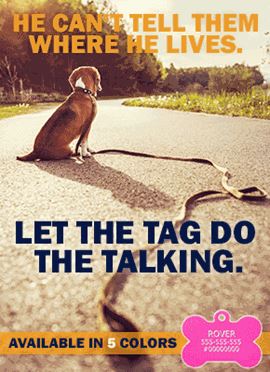
Teach Your Dog to Fetch in Three Steps
There’s nothing more rewarding than teaching your dog a new trick, so let’s take a look at a classic command that can be both useful and fun for you and your dog.
What you will need:
- Your dog (of course)
- Your dog’s favorite treats (use very small portions because you will be relying on these a lot during early training)
- Mastery of sit command
- A fetch object (tennis ball, rubber toy, etc.)
- An enclosed, low-distraction environment for practicing
- Time and patience
Once you’ve determined that you have everything you need, you can begin training. The fetch command consists of three components: the come command, the release command, and the combination of the two.
Step 1: Teaching the come command
If you haven’t taught the come command to your dog yet, have no fear. We’ll explain everything you need to know to get your dog to come when called.
First, start in an enclosed, quiet place without distractions. Play with your dog and get him really amped up about being around you. Anytime he approaches you or comes near you, say “Good dog!” and give him a treat. Move away from your dog and tell him “come” in a happy, inviting voice. When your dog approaches, praise and treat him.
Have someone hold your dog in place, and then move yourself a few feet away. Give the come command and have the friend release him, and when your dog happily comes to you, treat and repeat! Increase the distance you move from your dog gradually, rewarding him for coming when called each time.
When you begin to get the desired behavior consistently eight out of 10 times, continue to hold out your closed hand as if it contains a treat, but begin to cut back on the treats for successful come commands and replace them with verbal praise.
When you can get your dog to perform this behavior consistently with eight out of 10 attempts, you can begin to remove the outstretched, closed hand part of the exercise, replacing it with verbal praise and pets.
Step 2: Teaching the release command
Attract your dog’s attention towards the fetch object and give it to him. If this is the beginning of the first training session, allow him to play with the toy long enough to burn off some of his initial excitement, so that he will be able to better concentrate when the training begins.
When you are ready, tell your dog to “come” and then to “sit” facing toward you. He should still have the toy in his mouth, but if he doesn’t, you can give it to him.
When you have your dog’s attention, tell him to “release.” It’s highly unlikely that he will release the toy on the first command, but thankfully you also brought his favorite treats. At the time you give the command, reach out a closed hand with a treat inside near his nose, but do not give it to him yet. He should pick up its scent and reflexively drop the object from his mouth.
Once that happens, reward him with the treat and repeat the process until you can get him to release the object on command eight out of 10 times.
When you feel he has a good grasp of the release command, continue the exercise but begin cutting back on the amount of treats you give him for obeying. You should still be holding out your fist as if it has a treat in it, but instead of giving a treat for each successful release, you can give him verbal praise and pets.
He has likely already associated obeying the release command with reward, so he should continue to perform the behavior even if he doesn’t receive a treat upon each successful completion.
When you get your dog to perform the behavior consistently with eight out of 10 attempts, you can stop holding out your closed hand during the exercise. Instead, reward successful attempts with verbal praise and pets.
Step 3: Combine the come command with the release command
When you throw the fetch object, your dog should go after it. If he is reluctant to go after the object, consider rubbing small amounts of peanut butter or scent-rich treats on it, letting him smell it to gain his interest, and then throwing it.
Since you already taught him the release command, he now knows how to give the fetch object back. So, the missing link at this point is getting your dog to return to you with the object so that you can tell him to release it, and this can be achieved by giving him the come command after he has caught the thrown object, and then giving the release command once he returns to you with the object in his mouth.
Remember, even though you’ve already taught your dog the come and release commands, it may still take some time for him to get used to performing them together, but if you remain patient and stick to the steps, you’re bound to have success. And, if it seems your dog is having trouble with one of the steps, don’t be afraid go backwards a bit as needed, and then work your way up once again.
















